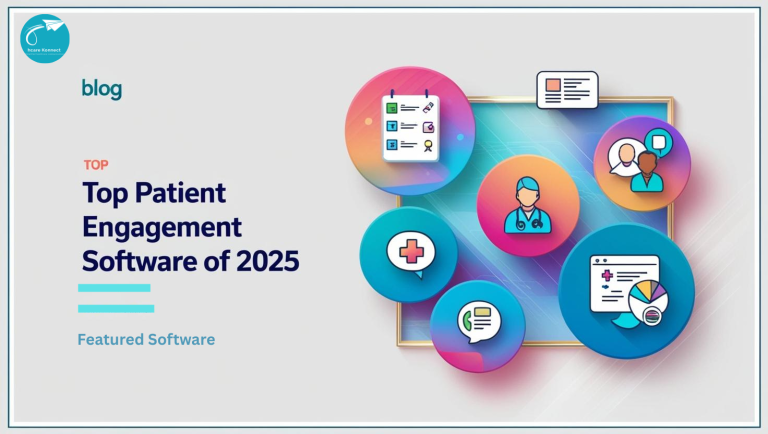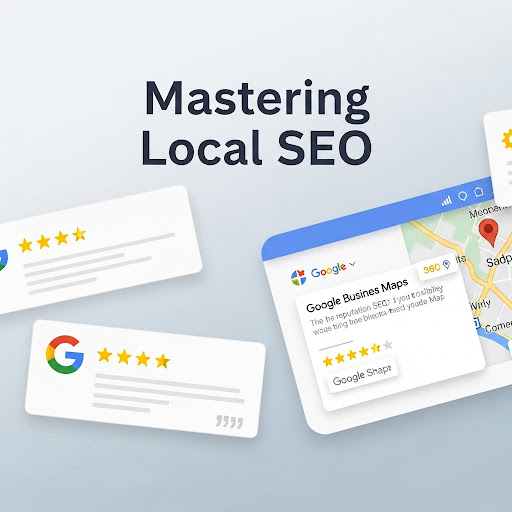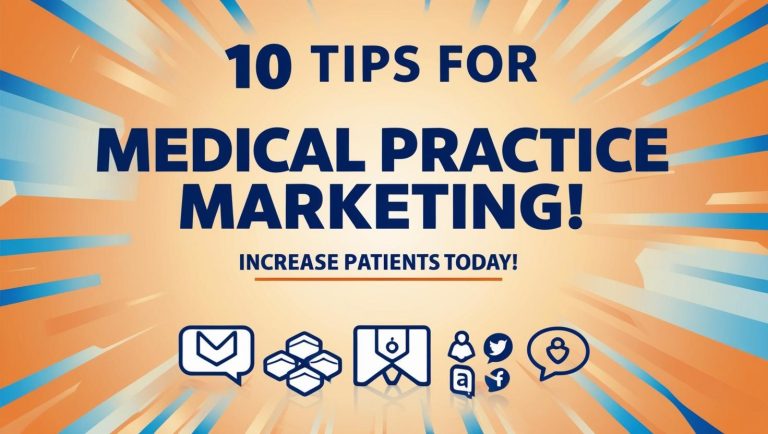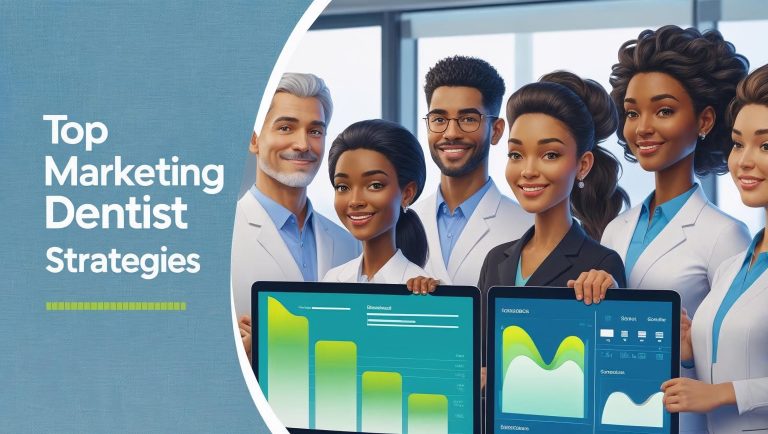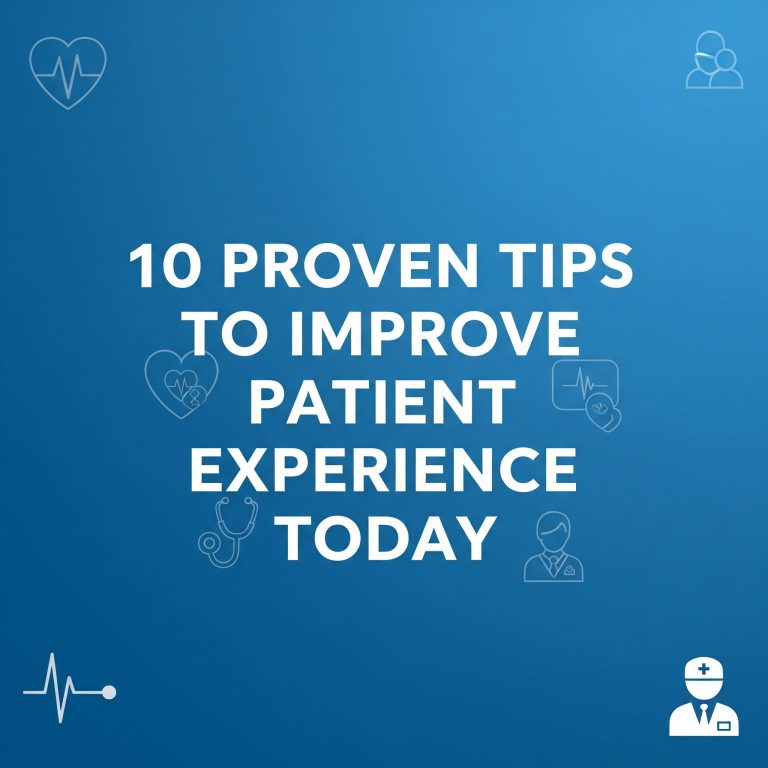Top Strategies for Effective Email Marketing for Healthcare Providers
Email marketing for healthcare providers enhances patient engagement and loyalty. It allows you to easily share important health updates, promote services, and build trust. This article provides actionable strategies to acquire new patients, retain existing ones, and ensure compliance with regulations.
Key Takeaways
- Email marketing in healthcare is a cost-effective Swiss Army knife for patient acquisition and retention—use it wisely!
- Segmenting your audience is crucial; understanding patient demographics and health concerns helps tailor your messages for maximum engagement.
- Don’t forget about the technical stuff—ensure HIPAA compliance and leverage tools like DMARC and SPF to keep your emails out of the dreaded spam folder!
Importance of Email Marketing for Healthcare Providers

Why is healthcare email marketing the superhero of digital marketing strategies? Simple—it’s cost-effective, personal, and incredibly efficient at both patient acquisition and retention.
Crafting targeted email campaigns allows healthcare providers to connect with patients effectively through a healthcare email marketing strategy. Here’s how it can be done.
Using email marketing for healthcare providers to boost Patient Acquisition
Think of email marketing as your secret weapon for drawing in new patients. Promoting specific offers and discounts through targeted emails and a promotional email can pique prospective patients’ interest and turn them into loyal marketing emails clients.
Growing your email list via sign-up forms and social media channels is a savvy move. Additionally, relevant content reduces spam complaints and ensures your emails reach patients’ inboxes.
Patient Retention
Retaining patients is generally more cost-effective than acquiring new patient acquisitions. Personalized marketing tailored to specific health concerns demonstrates care for individual needs. Segmentation and automation—like birthday greetings, appointment reminders, and follow-up messages—are invaluable here.
Regular communication keeps your practice top-of-mind and encourages follow-up patient visits, ultimately improving patient satisfaction and retention.
Building Trust
Trust is the cornerstone of any healthcare provider-patient relationships. Consistent, informative newsletters can establish and maintain this trust. Sharing educational content and patient testimonials positions your healthcare brand as a trusted source of valuable health information and healthcare news.
Patient testimonials, in particular, can address common concerns and reinforce trust, making them a powerful tool in your email marketing arsenal.
Understanding Your Audience
To hit the bullseye with your email marketing, you need to understand your audience inside and out. Tailoring your healthcare marketing strategies to meet the interests and needs of your audience can significantly enhance patient engagement.
Diving into patient demographics, segmenting by health concerns, and using personalization techniques ensures your messages resonate with the target audience.
Identifying Patient Demographics
Segmentation is the name of the game when it comes to effective healthcare email marketing. Delivering targeted emails to specific groups increases engagement and conversion rates.
For instance, a dermatologist might cater to teenagers with acne and older adults with rosacea, while a general practitioner could appeal to all age groups needing routine checkups. Medical professionals tailoring your content to match these specific needs is crucial for effective communication.
Segmenting by Health Concerns
Grouping your audience based on specific health concerns enhances the relevance of your emails and boosts engagement. Targeting prospective patients with similar health issues allows you to create newsletters that address their specific needs. Proactive communication about their health can also encourage less frequent patients to engage more consistently.
Segmentation, automation, and personalization are key to making your healthcare marketing effective.
Personalization Techniques in email marketing for healthcare providers
Personalization is more than just a buzzword—it’s a powerful tool in your email marketing strategy. Specific patient data, like medical history, enables the creation of highly relevant content. Incorporating personal touches, like addressing patients by their first name or sending automated birthday greetings, can make your emails feel more genuine and engaging.
Crafting Effective Email Campaigns

Creating effective email campaigns is both an art and a science. Communication tailored to patient preferences enhances engagement and reduces the risk of unsubscribes. Promotional emails should include special promotions and reminders about your services to attract patient interest.
Using diverse formats like blogs, videos, and interactive tools can make your emails more engaging. Remember, a well-planned and high-quality email campaign can connect effectively with your target patients.
Creating Engaging Subject Lines
Subject lines are your first impression—make them count! Engaging subject lines can significantly improve open rates, which is crucial for the success of your healthcare email marketing. Keep them concise, ideally around 50 characters, and highlight specific benefits to capture attention.
Personalization in email subject lines can also increase the likelihood of your emails being opened. Incorporating a subject line that resonates with your audience can lead to higher engagement.
Designing Responsive Emails
With over half of email opens occurring on mobile devices, designing responsive emails is a must. A mobile-first design approach ensures that your emails are visually appealing and functional across various devices. This enhances user experience and engagement, making your healthcare email marketing more effective.
Remember, rushing to send an email without careful crafting can undermine your efforts, and don’t forget to checkout hCare Konnect’s AI email templates.
Call to Action (CTA) Strategies in email marketing for healthcare providers
Your CTAs are the guiding lights in your emails, leading subscribers to take the desired actions. Ensure clarity on the next steps you want your subscribers to take. Effective CTAs should clearly state the desired action and be straightforward.
Implementing A/B testing for different email elements can provide insights into what resonates best with your audience, guiding future email marketing strategies.
Ensuring Compliance and Security

In the healthcare industry, compliance and security are paramount. Ensuring that your email marketing activities adhere to regulations like HIPAA is crucial for protecting patient information.
This section will delve into HIPAA compliance, TLS encryption, and the importance of DMARC and SPF registrations.
HIPAA Compliance
HIPAA compliance regulates the information shared electronically regarding patients’ health. It’s essential to verify that your marketing activities comply with HIPAA to protect patient information.
When collecting email addresses, adherence to HIPAA privacy regulations is crucial. Using a reputable email service provider can help ensure compliance and avoid being filtered as spam. A good source for HIPAA knowledge is here.
What is TLS Encryption & Why Does it Matter in email marketing for healthcare providers
TLS encryption is crucial for safeguarding email communications in healthcare by ensuring that sensitive information remains confidential during transmission. TLS 1.2 or 1.3 is the recommended standard for protecting patient information in emails.
This type of encryption secures email communications by encrypting data in transit, meeting HIPAA requirements.
Sending Registrations: DMARC, SPF
Implementing DMARC and SPF helps prevent email spoofing and ensures that emails sent from a domain are legitimate. SPF records specify which mail servers are authorized to send emails on behalf of a domain, helping to prevent unauthorized use.
DMARC policies dictate how receiving servers should handle emails that fail SPF or DKIM checks, enhancing email security.
Overcoming Deliverability Challenges
Deliverability is a common challenge in email marketing. Ensuring that your emails reach the intended recipients without being marked as spam is essential for effective communication.
This section will explore list scrubbing, avoiding spam folders, and monitoring performance to overcome these challenges.
List Scrubbing
Regularly analyzing open and click-through rates can indicate when it’s necessary to clean your email list for improved engagement. Assessing unsubscribe rates helps maintain a healthy email list and optimize engagement.
List scrubbing is necessary to protect the domain of Medical practice.
Avoiding Spam Folders in email marketing for healthcare providers
Using DMARC, SPF, and other sending registrations helps ensure your emails reach recipient inboxes rather than being marked as spam. Regularly cleaning your email list by removing inactive or invalid addresses helps maintain high deliverability rates.
Keeping emails out of spam folders is crucial for effective email marketing.
Monitoring Performance
Tracking key metrics such as open rates, click-through rates, and conversion rates provides insights into the effectiveness of your email campaigns. Tools like Google Analytics and Constant Contact’s analytics platform can help monitor campaign performance and provide valuable insights.
Ongoing analysis and adjustments allow healthcare providers to optimize their email marketing campaigns for better engagement and effectiveness.
Leveraging Automation in Email Marketing for Healthcare Providers
Automation in email marketing helps reach clients at the right time and reduces workload, making email automation communication more effective.
This section will explore automated welcome series, appointment reminders, and follow-up emails to enhance your email marketing strategy.
Automated Welcome Series
Automated welcome messages yield the highest engagement rates among new patients, making them a crucial part of the onboarding process for a new patient. A welcome email series should include a welcome message, details about the practice’s mission and specialties, care access information, relevant educational content, and introduce patients through welcome emails.
Appointment Reminders
Using automation to send appointment reminders ensures patients remember their scheduled visits, significantly minimizing the rate of no-shows.
Follow-up emails serve as an effective tool for addressing no-shows by reminding patients of their missed appointments and encouraging them to reschedule.
Follow-up Emails
Sending follow-up emails helps healthcare providers gather valuable feedback about patient experiences, which can drive service improvements. These emails also help maintain patient engagement and build long-term relationships.
Content Ideas for Healthcare Emails
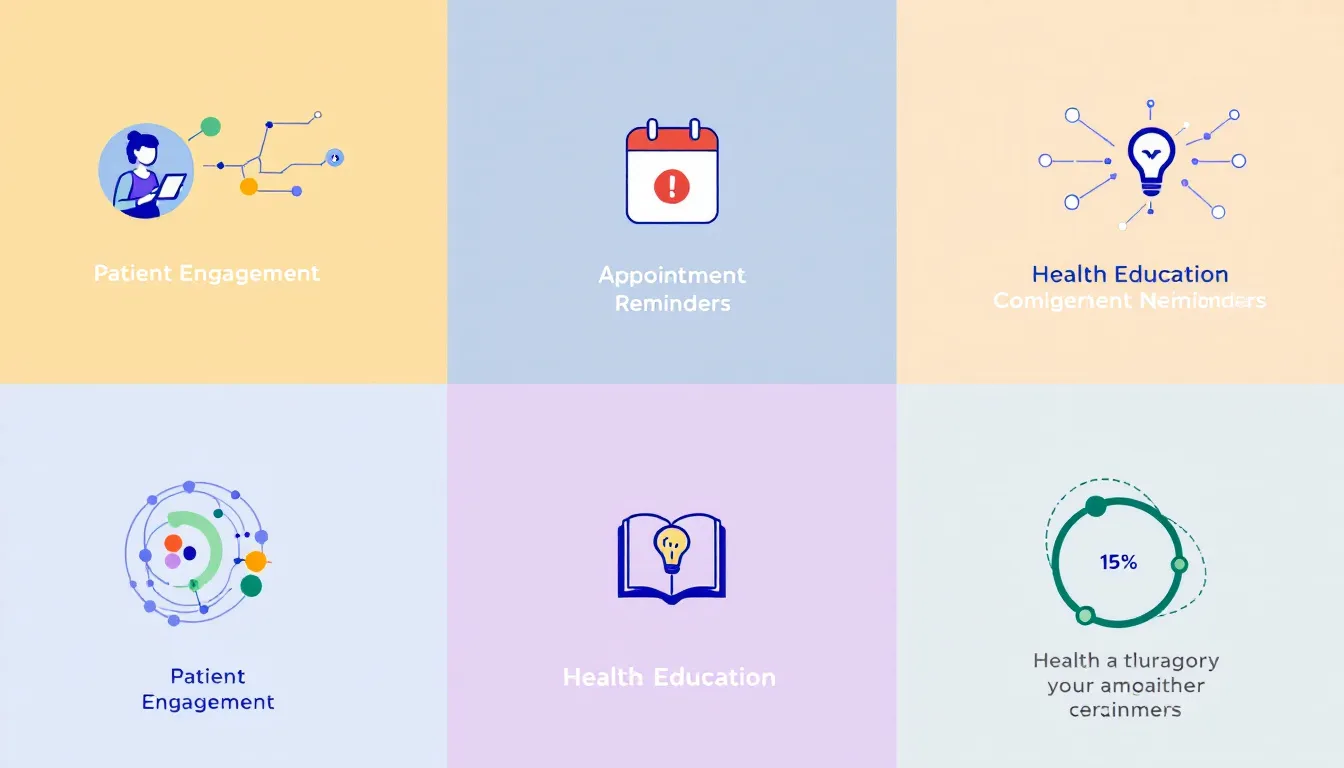
Delivering valuable content is crucial for maintaining patient engagement and trust.
This section will provide ideas for educational content, patient testimonials, and seasonal future campaigns to keep your healthcare emails fresh and relevant.
Educational Content
Educational content can position your healthcare organization as a reliable source of health information. Including articles on medical advancements, wellness tips, and explanations of health conditions can keep patients informed and engaged. Sending articles on wellness and preventive care can significantly enhance the educational value of your emails.
Providing actionable health tips and helpful resources in a healthcare practice and healthcare practices guides patients in managing their health and making informed decisions alongside health professionals and healthcare services.
Patient Testimonials
Success stories from satisfied patients can greatly enhance the credibility of healthcare providers and their services. Incorporating patient testimonials in email campaigns acts as a persuasive tool, attracting potential patients by showcasing positive outcomes.
Gathering testimonials through follow-up emails, surveys, and direct communication post-appointment can help build trust and foster loyalty among existing patients.
Seasonal Campaigns
Aligning emails with seasonal events improves engagement and relevance. For example, promoting flu prevention and managing winter colds during the winter months can be highly effective. At the start of a new year, sending emails offering support for health and wellness goals encourages patient engagement.
Inviting recipients to participate in events fosters community engagement and generates interest.
Measuring Success in Email Marketing
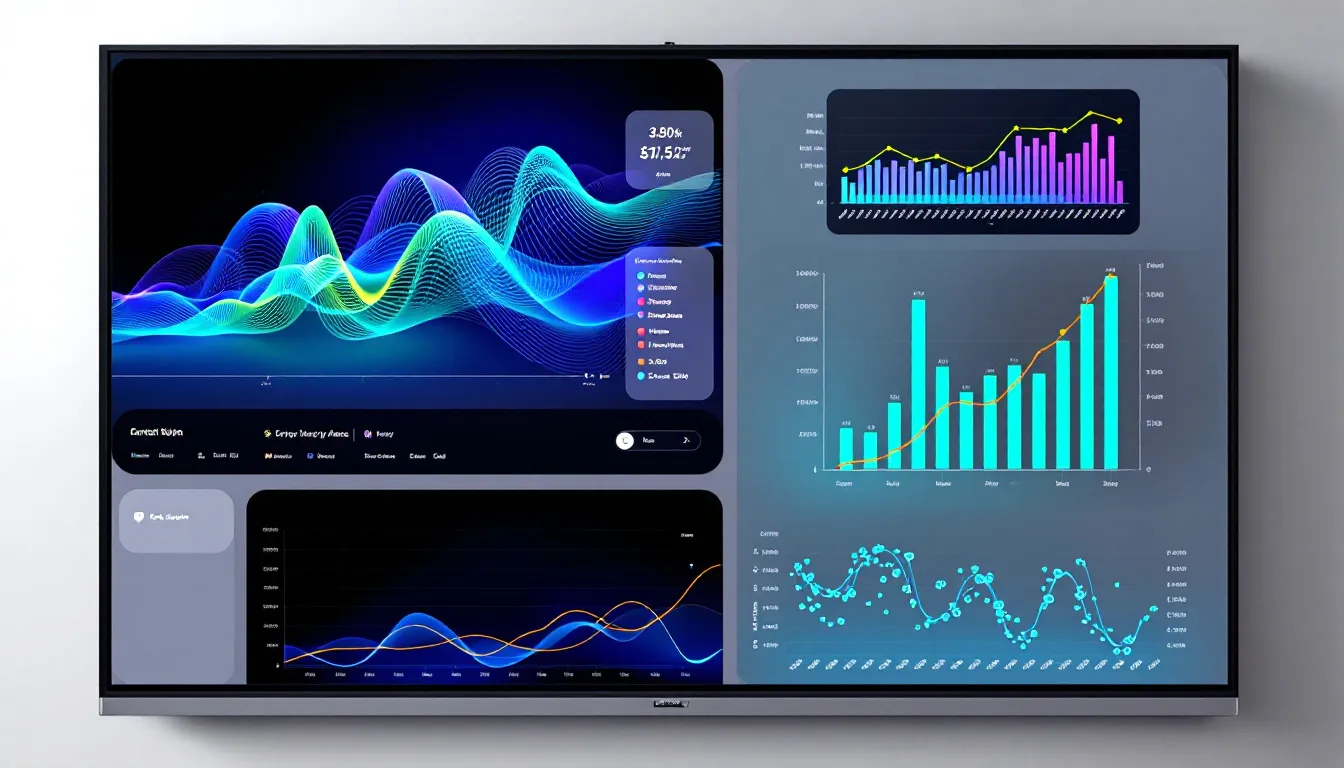
Measuring the success of your email marketing campaigns is essential for continuous improvement. This section will cover key metrics to track, tools for analysis, and the importance of continuous improvement in your email marketing strategy.
Key Metrics to Track in email marketing for healthcare providers
Tracking key performance indicators (KPIs) such as open rates, click-through rates, and conversion rates is essential for understanding the effectiveness of your email campaigns and making informed adjustments. Emails designed for mobile devices can increase unique click rates by 15%.
Monitoring these metrics allows healthcare marketers to refine their email strategies and improve patient engagement.
Tools for Analysis
Tools like Google Analytics and Constant Contact’s analytics platform are essential for tracking email marketing performance. Constant Contact’s analytics provides insights into open rates, read rates, engagement, and ROI, helping businesses evaluate campaign effectiveness. The platform also includes features like audience segmentation, A/B testing, and the analysis of both social media and email performance.
Using analytical tools to monitor campaign performance is crucial for effective email marketing.
Continuous Improvement
Ongoing analysis allows healthcare providers to adapt and refine email marketing strategies for better patient engagement. Key metrics to track include open rates, click-through rates, and conversion rates, which are essential for measuring campaign success. Utilizing tools like Google Analytics and Constant Contact’s analytics platform helps in monitoring campaign performance effectively.
Analyzing these metrics and improving email campaigns results in better targeting, higher engagement rates, and ultimately enhanced overall patient satisfaction.
Summary
In summary, effective email marketing for healthcare providers involves understanding your audience, crafting engaging campaigns, ensuring compliance and security, overcoming deliverability challenges, leveraging automation, and continuously measuring and improving your efforts. By implementing these strategies, you can attract new patients, retain existing ones, and build lasting trust. Embrace the power of email marketing to transform your healthcare practice into a hub of engagement, information, and trust. Start today and watch your practice thrive!
Frequently Asked Questions
Why is email marketing for healthcare providers important?
Email marketing is crucial for healthcare providers because it’s an affordable way to attract and keep patients while fostering trust with personalized communication. In a world full of noise, it ensures your message hits right in their inbox!
How can email marketing help attract new patients?
Email marketing can reel in new patients by showcasing irresistible offers and discounts tailored just for them, turning curiosity into loyal smiles. It’s like sending out a friendly invitation to better health!
What are some strategies for email marketing for healthcare providers that lead to retaining existing patients through email marketing?
To keep your patients as loyal as a golden retriever, try personalizing your emails, segmenting your audience, and sending automated gems like appointment reminders and birthday wishes. Consistent communication is the icing on the cake for patient satisfaction!
How can healthcare providers ensure compliance and security in email marketing?
To keep your email marketing as secure as a vault, just remember to dance to HIPAA’s tune, wrap your messages in TLS encryption, and put on the DMARC and SPF armor. Following these steps will help you keep patient info safe and sound!
What are some key metrics to track in email marketing for healthcare?
To keep your email marketing pulse healthy, track open rates, click-through rates, and conversion rates; they’re your vital signs for engagement success. Remember, the only spam we want is the kind you put on a sandwich!

